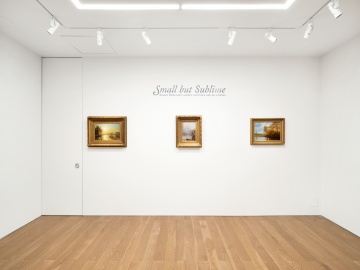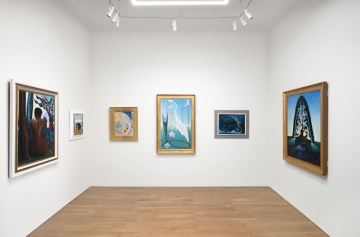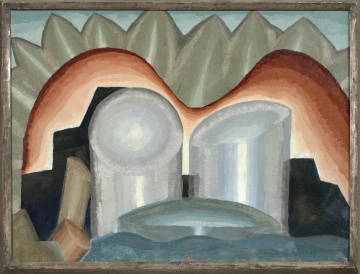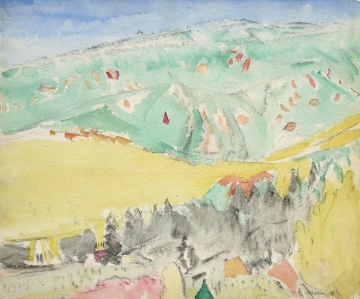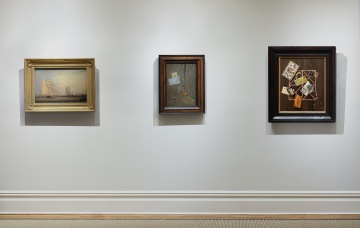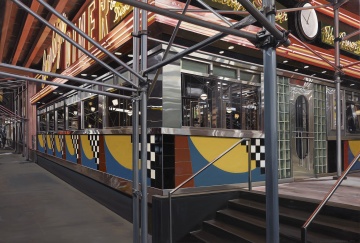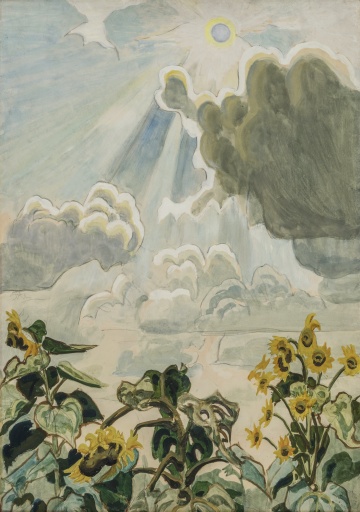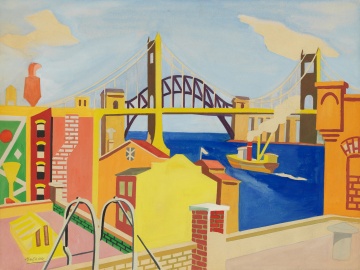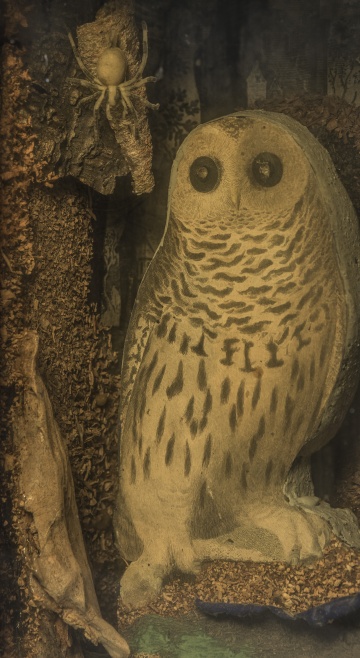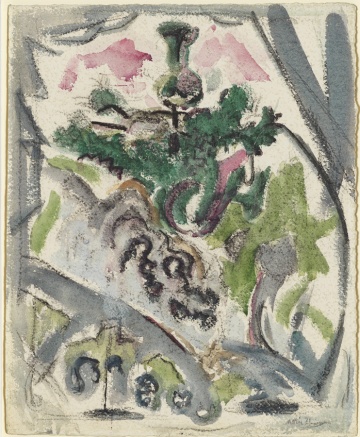Schoelkopf Gallery
390 Broadway
New York, NY 10013
212 879 8815
New York, NY 10013
212 879 8815
Schoelkopf Gallery is a leader in the field of American art, focusing on the finest works of this country’s artists, created from 1875 to today. The gallery’s program communicates the entire sweep of the modernist impulse in America through its presentation of innovative and important works in both abstract and realist modes. The mission of the gallery is to expand the field of American art through research, scholarship and our treasured relationships with the leading collectors and museums. The gallery maintains a robust schedule of programming and exhibitions which support the engagement of new audiences. It strives to inspire a richer understanding of the contributions of the leading American artists. The gallery is proud to represent the painter Richard Estes and the estates of John Marin, and Manierre Dawson.
Artists Represented:
Richard Estes (b. 1932)
Manierre Dawson (1887-1969)
John Marin (1870-1953)
Works Available By:
Georgia O’Keeffe (1887-1986)
Georgia O’Keeffe (1887-1986)
Henrietta Shore (1880-1963)
Charles Burchfield (1893-1967)
Oscar Bluemner (1867-1938)
Milton Avery (1885-1965)
William Merritt Chase (1849-1916)
Alfred Maurer (1868-1932)
Mary Cassatt (1844-1926)
George Bellows (1882-1925)
Arthur B. Carles (1882-1952)
Charles Demuth (1883-1935)
Marsden Hartley (1877-1943)



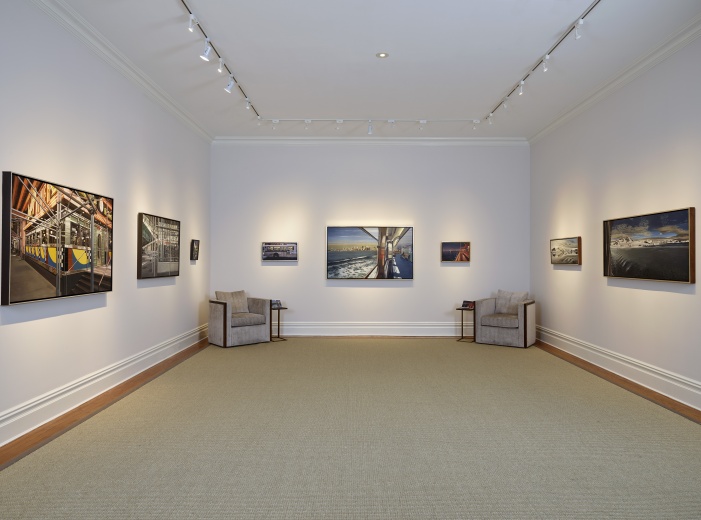
Installation view, Richard Estes: Voyages at Menconi + Schoelkopf
Installation view, Richard Estes: Voyages at Menconi + Schoelkopf
Installation view, Richard Estes: Voyages at Menconi + Schoelkopf
Installation view, Richard Estes: Voyages at Menconi + Schoelkopf
Oscar Bluemner
Bluemner and the Critics
Oscar Bluemner’s impact and legacy over the past century is analogous to the experience of other leading modernists: embraced in the years leading up to and following 1913’s Armory Show and the 1916 Forum Exhibition, they mostly fell out of favor during the middle decades of the twentieth century, only to be rediscovered in the years following America’s Bicentennial in the late 1970s and 1980s. The story of Bluemner’s life and career are emblems of the friction and benefit of the developing crosscurrents between Europe and America. We believe the market’s reevaluation of Bluemner’s contributions is central to expanding international interest in and understanding of American modernism. Bluemner and the Critics shares the artist’s career and accomplishments through his works of art, writings, theories, and also through the words of America’s leading critics over the broad sweep of the twentieth century.
Albert Bierstadt
Small but Sublime: Albert Bierstadt Cabinet Paintings and Oil Studies
January 19, 2024 - February 23, 2024
Small but Sublime: Albert Bierstadt’s Cabinet Paintings and Oil Studies investigates oil paintings of intimate scale descended in the family of the artist’s wife, Rosalie Osborn. Ranging in subject matter from Bierstadt’s extensive travels to imagined realms, the exhibition includes two cabinet paintings—highly finished, fully developed studio compositions—and two oil studies painted en plein air. Bierstadt achieved fame for his monumental landscapes inspired by his peripatetic adventures, such as Sunset Glow, Mount Shasta (1880s), also included in the exhibition. In contrast, the Osborn family works, which have never before been exhibited, reveal the painter’s capacity to surprise the viewer with ambitious scenes presented in a jewel-box scale for private interiors.
Arthur Dove
Arthur Dove: Yes, I Could Paint a Cyclone
September 29, 2023 - December 1, 2023
'Arthur Dove: Yes, I Could Paint a Cyclone' presents a dynamic survey of increasingly nonrepresentational works that trace Dove’s evolution as a painter and reveal his unyielding interrogation of established artistic convention. Dove’s earliest expression of his unique nonrepresentational style marks the first sustained effort in developing non-figuration by an American artist. 'Arthur Dove: Yes, I Could Paint a Cyclone' unites more than 70 important works in oil, pastel, watercolor, and charcoal from distinguished foundations and private collections throughout North America.
Now Modern Spring 2023
May 5, 2023 - July 7, 2023
The Spring 2023 edition of Now Modern presents a selection of works by Charles Demuth, Richard Estes, Marsden Hartley, Fitz Henry Lane, Norman Lewis, John Marin, Georgia O'Keeffe, John Frederick Peto, Mark Tobey, and Andrew Wyeth, among others. These leading artists worked across genres and styles to advance a variety of important movements that contributed to the evolving canon of American art, including Luminism, Realism, Abstract Expressionism, and Photorealism.
John Marin
John Marin Watercolors: 1916 - 1919
March 10, 2023 - April 21, 2023
Schoelkopf Gallery is pleased to present John Marin Watercolors: 1916-1919, on view from March 10 to April 21, 2023. John Marin produced his first watercolors in 1888 and later became known internationally as a master of the medium. He was also deeply connected to the land and frequently documented his hiking, boating, and fishing adventures with his portable painting supplies, easel, and paper. In 1916, Marin participated in the landmark Forum Exhibition of Modern American Painters at The Anderson Galleries, New York, which presented the latest developments from the American avant-garde. While most of the works exhibited retain at least some representational qualities, approximately one third—by Andrew Dasburg, Arthur Dove, Marsden Hartley, Stanton Macdonald-Wright, and Morgan Russell—were daringly abstract and may have inspired Marin to experiment further with nonrepresentational approaches as he continued to define his personal creative lexicon during this period. Marin’s watercolors from 1916 to 1919 trace the evolution of his desire to synthesize two parallel passions—a faithful commitment to the natural world and the modernist drive toward abstraction.
Masterworks of American Art from the Estate of Dr. Walter Goldfarb
January 17, 2023 - February 24, 2023
Norman Lewis
Norman Lewis: Painting on Paper
September 8, 2022 - October 21, 2022
Norman Lewis began his career in the 1930s as a social realist with a figurative style. In 1946, he shifted to non-objective, gestural abstraction to be a more effective agent for change, making him one of the first African Americans in the first generations of Abstract Expressionism. For Lewis, abstraction was a means through which to avoid engaging with established stereotypes in visual language and also a radical tool through which to effect change without the backlash of directly confronting political themes. Norman Lewis: Painting on Paper features these richly layered works on paper from the 1960s and 1970s, arguably Lewis' strongest years, and is on view from September 8-October 21, 2022.
Now Modern
May 9, 2022 - June 10, 2022
Schoelkopf Gallery debuts its biannual exhibit and accompanying publication Now Modern. An extension of the gallery’s mission, Now Modern seeks to expand the canon of American Art through scholarship and storytelling exploring great American Modernists including those whose renown never matched their talent. Telling the vivid, human and unexpected stories of modern American artists, Now Modern synthesizes the material, the creators, the market and the cultural and historic context which combine to give a work enduring value and meaning.
Albert Bloch
Albert Bloch: Expressionist
February 28, 2022 - March 25, 2022
Albert Bloch gave visual form to the emotional, intellectual and spiritual substance of contemporary life in Germany and America in the first decades of the 20th century. His work resonates with a deep and abiding reverence for the concept of “humanity” in all its beguiling incarnations. From parodies to melancholy meditations, from the theatrical to the scriptural, from expressionist figures to visionary landscapes, Bloch was supremely gifted at capturing the fragility and spirituality of a twentieth-century world in flux.
Image: Albert Bloch, Nacht IV, 1913
John Marin
John Marin in the White Mountains
September 7, 2021 - October 15, 2021
John Marin was an influential pioneer during the first five decades of the 20th century and among the first American artists to experiment with abstraction. Marin’s contributions are widely recognized amongst an international audience, more than 70 years after he was the first American artist selected to exhibit at the Venice Biennale in 1950. He is best known for watercolors painted along the northern coast of Maine and New York City, which were shown annually with gallerist Alfred Stieglitz. Marin in the White Mountains shares more than a dozen watercolors painted along one of the artist's regular sojourns as he transitioned between his two worlds of Maine and New York. The exhibition features work from the Marin family collection and the artist's estate and includes a series of richly patterned and freely painted watercolors of the New England countryside in New Hampshire's White Mountains. Marin’s passion for mountain scenery is revealed in these paintings. The mountains become a primary focus of his body of work and parallel his New York City pictures as a means to explore themes of representation and abstraction.
Richard Estes
Richard Estes: Voyages
June 14, 2021 - July 30, 2021
"Voyages" is Menconi + Schoelkopf's first presentation of work by Richard Estes. Richard Estes is the standard-bearer of photorealist painting and its most devoted and accomplished practitioner. Estes's unique ability to synthesize the experience of travel and observation have secured his legacy as one of the leading painters of the 20th century. His body of work includes interpretations of timeless, pristine images of New York City as well as his many adventures in travel spanning the globe. Though Estes has been at the forefront of the photorealist movement since the 1970s, his depictions of landscapes and cityscapes are perhaps more relevant today than ever before, when we all share an unsatisfied longing for travel. From the quiet, towering glaciers in Antarctica, to the glittering waters of Maine, to the energetic streets of New York and vast plains of Africa, the exhibition brings us an intimate experience of Estes's places and moments through the artist's eyes.
Image: Richard Estes, "Brooklyn Diner," 2021
Albert E. Gallatin, George L. K. Morris, Charles Green Shaw
The Park Avenue Cubists
April 26, 2021 - June 4, 2021
Menconi + Schoelkopf’s exhibition of The Park Avenue Cubists presents works by Albert E. Gallatin, George L. K. Morris, and Charles Green Shaw–artists on the vanguard of American modernism in the 1930s. After exhibiting with fellow abstractionist Suzy Frelinghuysen at Paul Reinhardt Galleries in 1937, this group of artists came to be known as the “Park Avenue Cubists” because of their privileged backgrounds and Upper East Side addresses. Despite the nickname, all were committed artists as well as passionate collectors who became leaders in the non-objective movement in America in the mid-1930s, a period of dueling artistic themes between the development of figuration and abstraction. The Park Avenue Cubists emerged out of the American Abstract Artists, a larger group dedicated to promoting abstraction of all kinds and included Morris and Shaw among its founding members. This stylistically diverse community of artists took on the establishment in the decade following the Depression and strongly opposed the prevailing taste for realism. Within this larger group of abstractionists, the Park Avenue Cubists did their part to advance innovations in non-objective painting. They considered themselves heirs to the European tradition of Cubism and its derivations while looking ahead to create an American aesthetic uniquely their own decades before abstract art would become synonymous with New York painting.
Charles E. Burchfield
Charles E. Burchfield: Inexhaustible
February 22, 2021 - April 16, 2021
The astonishing body of work Charles E. Burchfield produced in 1917 is comprised of 400 watercolors and numerous pencil drawings. The works signify one of the most explosively creative and innovative periods in the history of American watercolor and modern art. Charles E. Burchfield referred to fruits born of this fertile moment as his "Golden Year” and he repeatedly sipped from this deep reservoir to produce magical watercolor paintings, including a later passage of giant watercolors uniting various sheets of paper, bringing the intimacy and relevance of his earlier work to a grander scale in a post-war world.
Charles E. Burchfield’s watercolors are revered for their sense of spontaneity, brilliant color, and a throbbing internal energy. The 1917 works were fundamental to Burchfield's continued renewal for the next five decades. They also helped the artist to create a vocabulary of abstract thoughts which provided him the "conventions" to develop a sustained independent voice for nearly a half-century more. Charles E. Burchfield:
Inexhaustible celebrates the artist's unique place in American modernism; his profound independence and relentless pursuit of a unique art and clarion voice.
Charles E. Burchfield has enjoyed a repeated sense of renewal, most notably in the late 1940s when he broke free of the creative blocks of the Great Depression and World War II, which led to the Whitney Museum of American Art's triumphant retrospective exhibition of 1955, a six-venue exhibition that delighted audiences and critics across the nation.
Robert Gober's triumphant curation of Heat Waves in a Swamp, the most recent retrospective of Burchfield's work, has invited an entirely new audience to revisit Charles E. Burchfield's work and life. Born from a casual interaction nearly fifteen years ago between Robert Gober and Ann Philbin, the energetic Director of the Armand Hammer Museum at UCLA, Heat Waves in a Swamp has inspired a fourth crescendo of interest in Burchfield's work. Burchfield is now the darling also of the contemporary art world and social media. This most recent renewal signifies the lasting impact of Burchfield’s creativity.
There is something eerie and jarring about Burchfield's most complicated and successful compositions. A sense of Edgar Allen Poe's prose and the unsettling dreams and spirits Burchfield saw in the houses, landscape, and natural phenomena around him. Burchfield communed daily with nature and saw rich connections between the sun and the stars - even in the gently blowing winds of Western New York State on late September evenings. Burchfield worked tirelessly in the woods around his Ohio and Western New York homes and found in nature the sounds, spirits, and symbols to make sense of a rapidly shifting modern world. Butterflies, spiders, rain and wind feature prominently - the natural world was Burchfield’s studio. Human figures appear in the troubling times of the late 1920s and 1930s. With the unsettling times upon us today, we invite you to find solace in Burchfield's wild and romantic paintings and in the lucidity and intellect of his written journals.
The exhibition includes "Hemlock in November,” the summation of his career, which is the large-scale watercolor just off the easel when Charles E. Burchfield suffered a deadly heart attack. It is the summation of the artist’s sense of wonder regarding upcoming transition. Burchfield scholar, Dr. Nancy Weekly offers a biographical and stylistic analysis of Burchfield's life in a publication to accompany the exhibition.
Winslow Homer, Thomas Cole, Maurice Prendergast, John LaFarge, Louis Ritman, Theodore Robinson, John Frederick Peto, George Inness, Martin Johnson Heade, J. Alden Weir, Everett Shinn
The 19th Century
January 14, 2021 - February 12, 2021
Edward Biberman, Margaret Bourke-White, Clarence Carter, Howard Cook, Gordon Coster, Ralston Crawford, Charles Goeller, Lewis Hine, Edmund Lewandowski, Louis Lozowick, Jan Matulka, Charles Sheeler,
The Immaculates
December 2, 2020 - December 18, 2020
The Immaculates: Paintings, Photographs and Prints” presents the broad scope of the Precisionist aesthetic by exploring the stylistic concerns and iconography that held it together. Alfred H. Barr, Jr., founding director of the Museum of Modern Art, is believed responsible for coining the term “Precisionism” in 1927, but it was more common to refer to this loosely composed group of artists as the “Immaculate School.” Painted in sharp focus with clean lines and minimal detail, these works are devoid of human presence which underscores the artist’s emotional detachment. While most often associated with scenes of industrial America, this artistic approach was also applied to domestic interiors, still life compositions and rural landscapes. This exhibition re-examines the framework of this movement in a contemporary experience across a variety of media, including lithographs and photographs.
Image: Jan Matulka, "Hell Gate, New York City", 1936
Joseph Cornell
Joseph Cornell's Eternidays
December 1, 2020 - December 18, 2020
Few artists have made so much impact out of so little influence, and so little art out of so many objects, as Joseph Cornell. His method was a simple two-step process: the “ambulatory affair” of wandering the streets of Manhattan looking for lost objects; and the “distillation” as he edited down his findings, at a rate of a thousand to one, by one estimate, into the cabinets of curiosities for which he is known. The Surrealist object had been hinted at in furtive examples by Marcel Duchamp, but when Surrealism’s founder André Breton went looking to expand the notion in the 1930s, he found Joseph Cornell, already a master. While there are antecedents in still-life painting, in the collages of Max Ernst, and elsewhere, Cornell’s boxes were a unique medium when Cornell began his elegiac tributes to ballerinas in the 1930s. These shadowboxes cast an extraordinary shadow, far beyond the short period of association with Surrealism. From Jasper Johns and Robert Rauschenberg, from Pop Art to street art, the Cornell Box is a ubiquitous form of appropriative expression. Through them all runs a thread of longing and loss that Cornell navigated his entire life, attempting to capture what the artist called an “eterniday”–meaning “forever” captured within the box on a calendar that is a single day.
Image: Joseph Cornell, Detail image of "An Owl for Ondine", 1954
Edward Hopper
Edward Hopper: Works on Paper
November 2, 2020 - November 20, 2020
Menconi + Schoelkopf presents Edward Hopper’s remarkable works on paper. Edward Hopper’s initial fame grew out of his careful creation of large-scale oil paintings which are among the most iconic images of the 20th and 21st centuries. For many years of his career, Hopper created fewer than four important canvases and most were acquired by American museums from their initial exhibitions. Less well known is Hopper’s creation of a greater number of watercolors, etchings, and drawings which are comfortably among the finest works on paper of the 20th century. Carol Troyen, curator of the important exhibition and publication of "Edward Hopper’s Watercolors," serves as guest scholar to the Menconi + Schoelkopf project. Carol offers articles on each of the important works in the exhibition and an illuminating essay on Hopper’s printmaking. Hopper’s prints are made in very small editions, and many of the images offered for sale here have not been on the market over the past decade.
Image: Edward Hopper, "Evening Wind", 1921
John Marin
Marin + The Critics
February 24, 2020 - July 31, 2020
Menconi + Schoelkopf is pleased to announce a solo exhibition of works by John Marin at the gallery’s newly renovated location at 22 East 80th Street, which will run concurrent to a presentation at The Art Show 2020 in a recreation of the artist's seminal installation at Alfred Stieglitz's Gallery 291. Menconi + Schoelkopf’s exhibition and booth will explore three defining exhibitions across Marin’s career, representing the shifting dialectic between his work and the critical response.
N.C. Wyeth
Storyteller
September 10, 2019 - October 25, 2019
Charles Biederman
May 20, 2019 - July 3, 2019
Thomas Hart Benton
The Mechanics of Form
April 29, 2019 - May 17, 2019
Manierre Dawson
Modernist Pioneer
April 1, 2019 - April 26, 2019

 Back to all Member Galleries
Back to all Member Galleries


